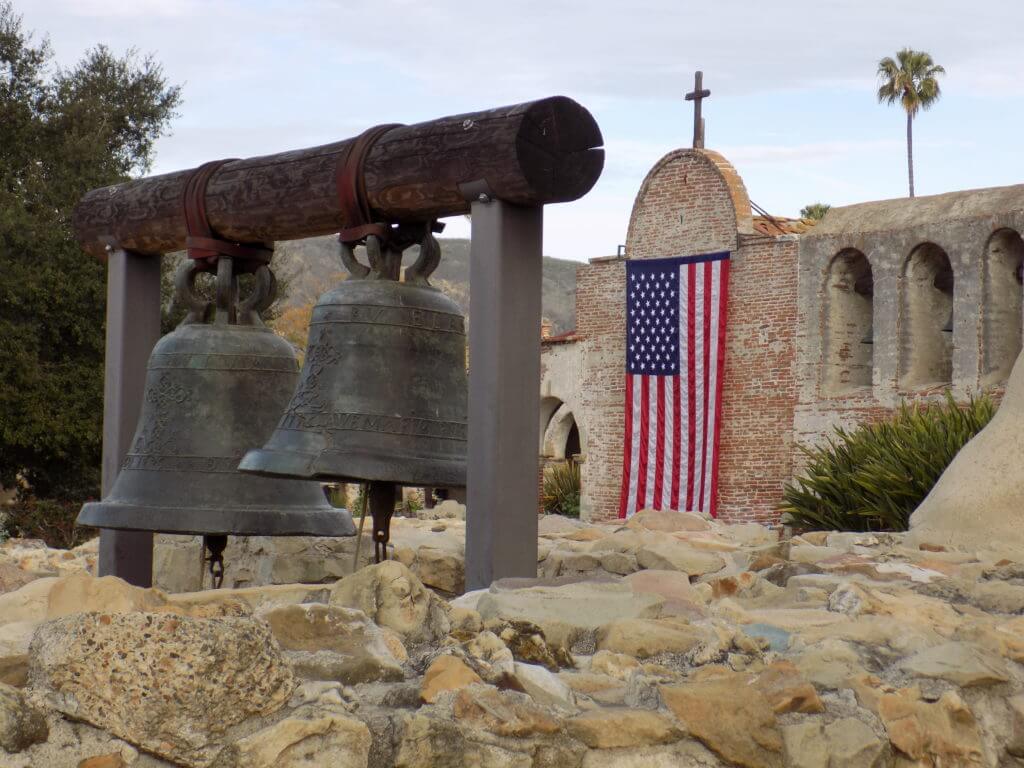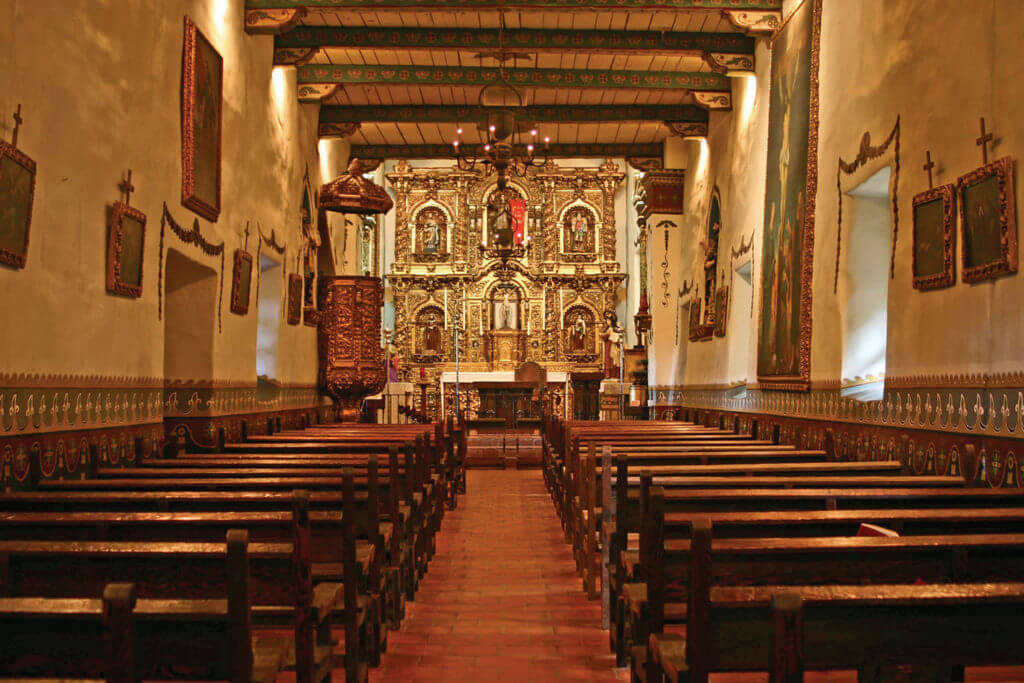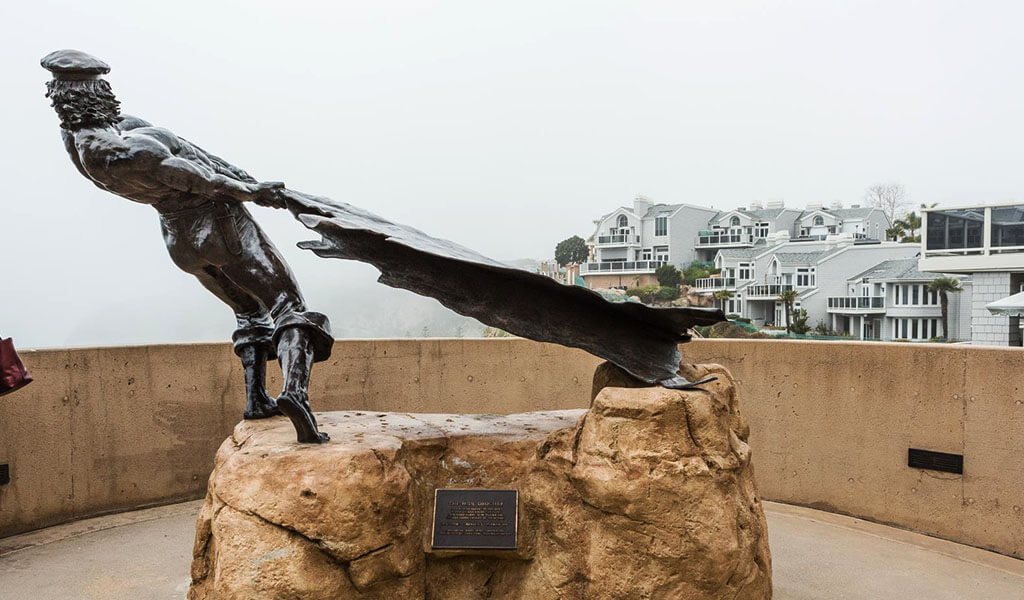The Sacred Home to a Curious Flock
A Touch of European History

For years, songs and books have immortalized Mission San Juan Capistrano. The Mission is the foundation of Orange County and the home to a rich tradition of Catholic, Native American, Mexican and Spanish heritage, architectural history and a curious flock of swallows that returns to each spring without fail.

Located just northeast of Dana Point, this historic mission features Spanish colonial architecture that dates back to the late 1700s. Arts and museum lovers will enjoy viewing several relics and art pieces from this time. Inside and out, the mission tells the story of a very different time in California’s history. From its early days as a working mission to its present state as a top attraction and Catholic church, Mission San Juan Capistrano has captivated pilgrims and birds alike for more than 200 years. Here’s why it’s so special.
Mission San Juan Capistrano Facts
Doing some research, or just a history buff? Get the Mission San Juan Capistrano facts below, from historic to present day.
- In 1776, a rebellious group of American congressmen gathered in Philadelphia to pen a document that would forever alter the nation’s future. Three thousand miles to the west, California wasn’t yet a part of the United States, but it was busy creating some history of its own.
- On November 1, 1776, Spanish priest Junipero Serra founded the Mission San Juan Capistrano, the seventh of 21 California missions created under Spanish colonial rule. In the two and a half centuries that have passed, the mission remains a perennial visitor favorite, thanks to its ideal location and stunning architectural details, which have withstood the test of time.
- Established to spread Christianity to California’s indigenous people known as the Acjachemen, this mission would not only instruct the native people on religious traditions, but also teach them how to be self-sufficient while under Spanish rule.
- However, it was a difficult transition for many accustomed to the traditions, dress and food-gathering methods that were long established in their tribe. This, combined with deadly European diseases, reduced the indigenous populations by a startling percentage – nearly 75 percent were gone within 50 years of the mission’s founding.
- Through the years, Mission San Juan Capistrano has seen earthquakes, several government transitions, a sale to private owners and eventually a return to its original role as a Catholic mission under Abraham Lincoln’s administration.
- In the time since, Californians have dedicated great resources to preserving and protecting Mission San Juan Capistrano. Today, it hosts more than 300,000 visitors from around the globe each year and it remains one of the great landmarks of California history.
In the two and a half centuries that have passed, the mission remains a perennial visitor favorite, thanks to its ideal location and stunning architectural details, which have withstood the test of time.

More San Juan Capistrano History
Still have some questions? Here’s some more of your Mission San Juan Capistrano history questions, answered.
Is Mission Capistrano Still Used as a Church?
The mission parish still uses the historic Serra Chapel as their own private place of worship, while a newer church nearby now holds public Mass. The historic Mission Capistrano is available to the public primarily by tours and a museum, in present day.
Was Mission San Juan Capistrano Ever Destroyed?
Tragically, in 1812, an earthquake struck the area and destroyed the San Juan Capistrano Mission’s church portion of the structure. This disaster killed 40 native people. The church was never rebuilt after this tragic event.
After the earthquake, the four original church bells were moved to a bell wall, also called a Campanario. Two of these bells do not ring the way they used to, due to damage from the disaster. The bell wall now includes two of the original, smaller bells, and two large replica bells. If you’re lucky, you will hear the bells ring during your tour.
The Swallows of San Juan Capistrano
You can’t tell the story of this great stone church without talking about the famous swallows of San Juan Capistrano.
Each year around St. Joseph’s Day (mid-March), a flock of orange-tailed Cliff Swallows return to the mission to nest in its walls and arches. They reside at the mission all summer, delighting visitors and birdwatchers who “flock” to see them.
Then, in October, the swallows take flight to return to their winter home nearly 6,000 miles away in Argentina.
The day the birds leave in the fall is celebrated as the “Day of San Juan.” Originally a nuisance to the priests in Mission San Juan Capistrano, the birds have now become the stuff of legend with songs and stories being written about their uncanny ability to return to the same spot each spring. There’s even a webcam that shows the swallows enjoying life at the mission during spring, summer and early fall here.

How to Get to Mission San Juan Capistrano
To get to Mission Capistrano from Dana Point, Take Pacific Coast Highway to Del Obispo Street and head northeast. Turn left onto Camino Capistrano and drive until you see the Mission San Juan Capistrano where Camino Capistrano meets Ortega Highway. Alternatively, take Interstate 5 north for 1.9 miles and exit Ortega Highway. Go left onto Ortega Highway and arrive at the Mission moments later on the right side of the street. In the summer, you can also connect to San Juan Capistrano via the free Dana Point Trolley.
Please note, the mission has established new rules about photography, requiring a reservation for anyone wanting to photograph the site, even for personal use such as family or engagement photos. Learn more about filming and photography on the official
Mission San Juan Capistrano website.
Mission San Juan Capistrano Address
26801 Ortega Highway
San Juan Capistrano, CA 92675

Explore More Art & Culture
We use cookies on this site to enhance your user experience. By continuing to use the site, you agree to our cookie policy. More Information


